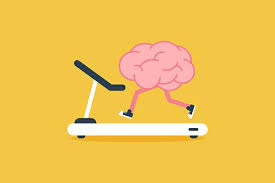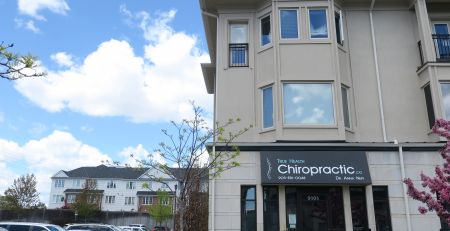We’re Built for Walking!
After many healthy individuals are being requested to stay at home due to social distancing during the COVID-19 pandemic, the warmer weather has certainly dragged out even the most reluctant folks for a walk in the very fresh and cleaner air these days. Staying at home for prolonged periods of time can pose a significant challenge for remaining physically active and avoiding the negative effects on mood and emotional health. With fitness centres still temporarily closed due to the COVID-19 outbreak, many people are returning to good, old-fashioned walking to help them feel great and get into shape thanks to its convenience and simplicity. And except for a good pair of walking shoes, it requires virtually no equipment. Physical activity and relaxation techniques can be valuable tools to help you remain calm and continue to protect your health during this time. We all have access to sidewalks, parks and trails, so now it’s time to discover the nuances of your neighbourhood, the challenges of the Bruce Trail, or the beautiful boardwalks and pathways by the lake.
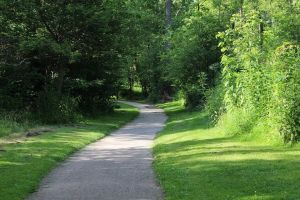
Research shows that about 30 minutes of moderate-intensity aerobic exercise 3 times per week can boost mood, reduce psychological distress, and decrease symptoms of depression and anxiety relative to those who are sedentary. This “dose” of exercise is equally effective at treating stress-induced mental illness when compared to antidepressant drugs, but without the potential side effects of medication. These recommendations can still be achieved even at home, with no special equipment and with limited space. Because our body is specifically designed for walking, this becomes the most readily available form of exercise we can all partake in!
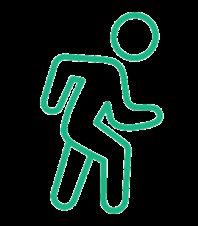
Walking accomplishes all of the following and more:
- Improves cardiovascular endurance and reduces the risk of heart disease
- Tones muscles of the legs
- Burns about 80 calories walking 3km/hr, or 107 walking 7km/hr. Most people have apps on their phones or fitness wrist bands that help track your steps and calories.
Getting Started
Walking 12 minutes every other day can offer important health benefits, but working up to 30 minutes, 5 days/week considers you an“active” adult!
- Move your arms freely in coordination with the opposite leg
- Don’t wear wrist or ankle weights as this adds pounds of force to your knees and other lower body joints.
- Don’t slouch or stoop your head as you walk. Hanging your head downwards will challenge the normal forward curve of your neck and will cause you to carry your weight improperly.
- Expect a little soreness in your thighs and calves for the first week or two. Remember to stretch your quadriceps, hamstrings, and inner thigh muscles after your walk while the muscles are still warm. Hold each stretch for 2 minutes to ensure permanent change being made to the length of each muscle group. This will also help minimize any muscle stiffness and soreness.
- Walk briskly “with purpose” in order for it to be an effective cardiovascular exercise.
- Only drink water before or during your walk to avoid dehydration—-muscles are 70% water, so make sure you stay well-hydrated even when you’re done your walk to minimize stiffness and cramping.
Walking Surfaces
Different walking surfaces may be better for your musculoskeletal system, especially if you suffer with osteoarthritis of the knees or hips.
- Walking on a cushioned rubberized track is the ideal because it absorbs most of the impact of your walking. There are lots of outdoor tracks associated with high schools, and some indoor tracks that give you a year-round option.
- Grass is a good surface option, but watch out for hidden dips and ruts in the ground.
- Walking on concrete is not the best choice because your knee joints absorb a lot of impact and can cause pain and inflammation. If this surface is your only choice, then be extra careful to select highly-cushioned and shock-absorbing shoes.
- Alternating days that you walk on a slanted surface can be interspersed with days you walk on flat terrain. Hills can give you HIIT (High Intensity Interval Training), but you need to strategize your walking route to fit this burst of energy-expenditure in.
Pain and Injury
While you may experience pain or injury in a particular area (knee or hip), the root of the problem may lie elsewhere. Foot or ankle problems create an imbalance in every step, leading to discomfort or injury that can move to the knees, hips, or low back. If you begin suffering from pain beyond typical muscle soreness, your chiropractor can diagnose and treat your pain or injury, and get you back on the track!
TIPS ON HOW TO STAY ACTIVE AND REDUCE SEDENTARY BEHAVIOUR WHILE AT HOME
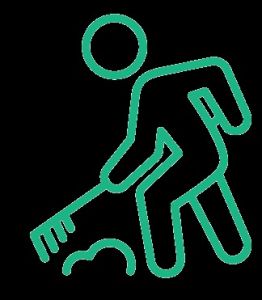
Take short active breaks during the day. Short bouts of physical activity add up to the weekly recommendations. Dancing, playing with children, and performing domestic chores such as cleaning and gardening are other means to stay active at home.
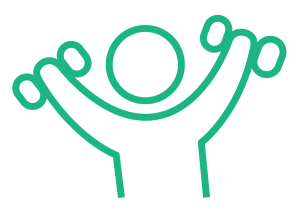
Follow an online exercise class. Take advantage of the wealth of online exercise classes. Many of these are free and can be found on YouTube or websites. If you have no experience performing these exercises, be cautious and aware of your own limitations. Stand up. Reduce your sedentary time by standing up whenever possible. Ideally, aim to interrupt sitting and reclining time every 30 minutes. Consider setting up a standing desk by using a high table or stacking a pile of books or other materials, to continue working while standing. During sedentary leisure time prioritize cognitively stimulating activities, such as reading, board games, and puzzles.
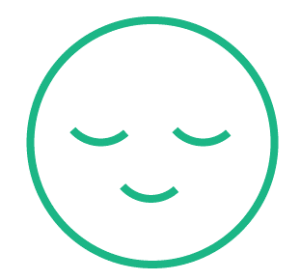
Relax. Meditation and deep breaths can help you remain calm, help your brain to produce “good” chemicals, and enable you to have a much better sleep. Sit comfortably on the floor with your legs crossed (alternatively, sit on a chair). Make sure your back is straight. Close your eyes, relax your body and progressively deepen your breathing. Concentrate on your breath, trying not to focus on any thoughts or concerns. Remain in this position for 5–10 minutes or more, to relax and clear your mind. A few great online meditation apps are HeadSpace and Ten Percent Happier.

For optimal health, it is also important to remember to eat healthily and stay hydrated by drinking water instead of sugar-sweetened beverages or alcoholic beverages. Ensure plenty of fruits and vegetables, and limit the intake of salt, sugar and fat. Choose whole grains rather than refined foods
To support individuals in staying physically active while at home, WHO/Europe has prepared a set of home-based exercises:
Knee to elbow
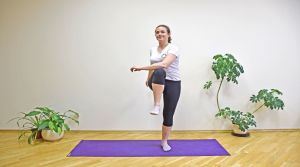
Touch one knee with the opposite elbow, alternating sides. Find your own pace. Try to perform this for 1–2 minutes, rest for 30–60 seconds, and repeat up to 5 times. This exercise should increase your heart and breathing rates.
Plank
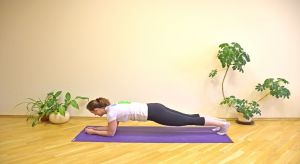
Support your forearms firmly on the ground, with the elbows under the shoulders. Keep the hips at the level of the head. Hold for 20–30 seconds (or more, if possible), rest for 30–60 seconds, and repeat up to 5 times. This exercise strengthens your belly, arms and legs.
Back extensions
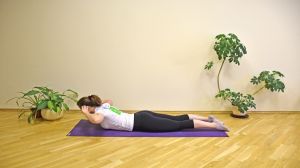
Touch your ears with your fingertips and lift your upper body, keeping the legs on the ground. Lower the upper body again. Perform this exercise 10–15 times (or more), rest for 30–60 seconds, and repeat up to 5 times. This exercise strengthens your back muscles.
Squats
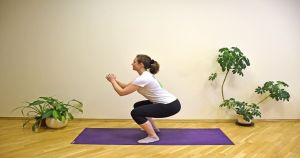
Place your feet at hip distance with the toes pointing slightly outwards. Bend the knees as much as feels comfortable, keeping the heels on the ground and the knees over (not in front of) the feet. Bend and stretch the legs. Perform this exercise 10–15 times (or more), rest for 30–60 seconds, and repeat up to 5 times. This exercise strengthens your legs and glutes.
Side knee lifts
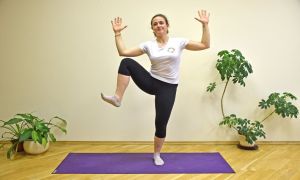
Touch your knee with your elbow, lifting the knee to the side, alternating sides. Find your own pace. Try to perform this for 1–2 minutes, rest for 30–60 seconds, and repeat up to 5 times. This exercise should increase your heart and breathing rates.
Superman
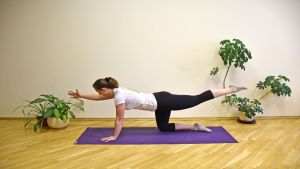
Place your hands under your shoulders and knees under your hips. Lift one arm forward and the opposite leg back, alternating sides. Perform this exercise 20–30 times (or more), rest for 30–60 seconds, and repeat up to 5 times. This exercise strengthens your belly, glutes and back muscles.
Bridge
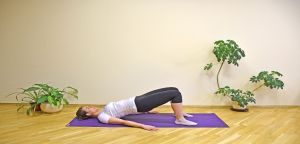
Plant your feet firmly on the ground with the knees over the heels. Lift the hips as much as it feels comfortable and slowly lower them again. Perform this exercise 10–15 times (or more), rest for 30–60 seconds, and repeat up to 5 times. This exercise strengthens your glutes.
Chair dips
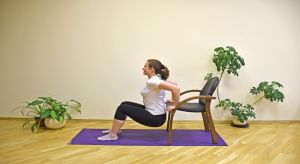
Hold onto the seat of a chair, with your feet about half a meter away from the chair. Bend your arms as you lower your hips to the ground, then straighten the arms. Perform this exercise 10–15 times (or more), rest for 30–60 seconds, and repeat up to 5 times. This exercise strengthens your triceps.
Chest opener
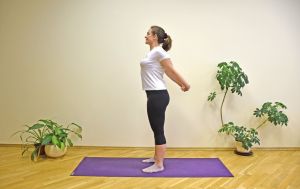
Interlace your fingers behind your back. Stretch your arms and open your chest forward. Hold this position for 20–30 seconds (or more). This position stretches your chest and shoulders.
Child’s pose
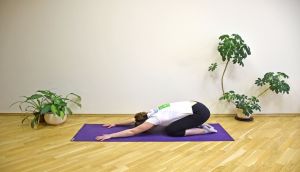
With the knees on the ground, bring your hips to your heels. Rest your belly on your thighs and actively stretch your arms forward. Breathe normally. Hold this position for 20–30 seconds (or more). This position stretches your back, shoulders and sides of the body.
Legs up the wall
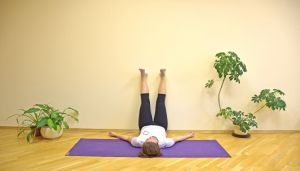
Bring your hips close (5–10 cm) to the wall and let your legs rest. Close your eyes, relax your body and progressively deepen your breathing. Concentrate on your breath, trying not to focus on any thought or concern. Rest in this pose for up to 5 minutes. This position is meant to be comfortable, relaxing, and de-stressing.

